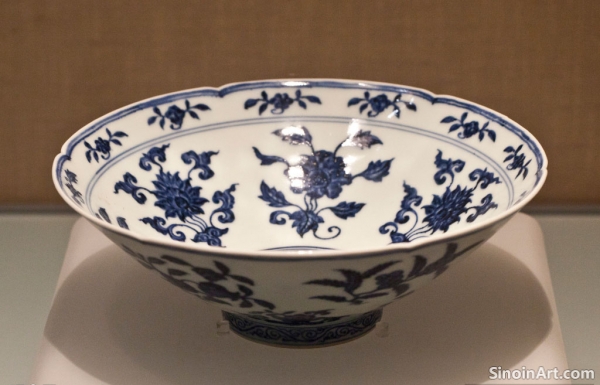Yuan Ceramics and the Production of "Shufu" Wares
|
"Shufu" wares, produced in Jingdezhen during the Yuan Dynasty, are known for their delicate white porcelain, often with subtle underglaze decorations in a pale blue or creamy white. These pieces were often made for the Imperial court or for other high-ranking officials and scholars and they demonstrate the continued importance of high quality white porcelain.  The name "Shufu" (樞府) refers to the Privy Council, highlighting the connection of these pieces to the Yuan court, and this connection between pottery production and government patronage demonstrates the importance of the imperial court during the Yuan era.  "Shufu" wares were often decorated with subtle underglaze patterns, such as floral motifs or auspicious symbols, which were created using fine brushwork and carefully selected materials. These pieces are prized both for the quality of the clay that was used and also for their beauty and the artistry of the designs.  The smooth, translucent glaze on Shufu wares enhances the delicate texture and pure white color of the porcelain, creating a sense of refinement and sophistication. The delicacy of the glaze was designed to emphasize the overall beauty of the piece. "Shufu" wares represent an important and distinct style of Yuan Dynasty porcelain, reflecting the refined tastes of the Yuan elite. These pieces are important elements of the overall study of pottery production at the time, and are a testament to the skill and dedication of Tang artisans. |
Tag : Yuan Shufu ware, Chinese white porcelain, Jingdezhen pottery, subtle decoration, porcelain history
Related information
- The Significance of Yuan Dynasty Porcelain in Chinese Art History
- The Cobalt Connection: The Sourcing and Impact of Blue Pigment in Yuan Porcelain
- The Forms and Shapes of Yuan Dynasty Ceramics
- The Impact of Yuan Dynasty Porcelain on European Ceramics and Decorative Arts
- The Future of Yuan Dynasty Porcelain Scholarship: Emerging Trends and Priorities
This article explores the historical significance of Yuan Dynasty porcelain, highlighting its innovations, its impact on trade and cultural exchange, and its role in the broader context of Chinese art history.
This article delves into the importance of cobalt in Yuan porcelain, highlighting its import from Persia, its impact on color, and the technological skill needed to harness its full potential in ceramic production.
Yuan Dynasty ceramics feature large, robust forms like large dishes, basins, and the iconic Meiping vase, which reflect both practical needs and the artistic and social context of the era.
This article examines the transformative impact of Yuan Dynasty porcelain on European ceramics and decorative arts, detailing how it inspired new techniques, influenced the development of blue and white traditions (like Delftware) and reshaped European artistic preferences.
This article discusses the future of Yuan Dynasty porcelain scholarship, highlighting emerging trends such as interdisciplinary approaches, the use of digital resources, the study of global influences, and new research priorities that will shape the direction of the field.